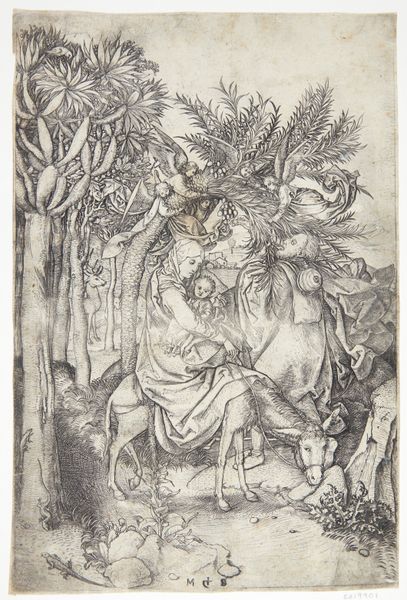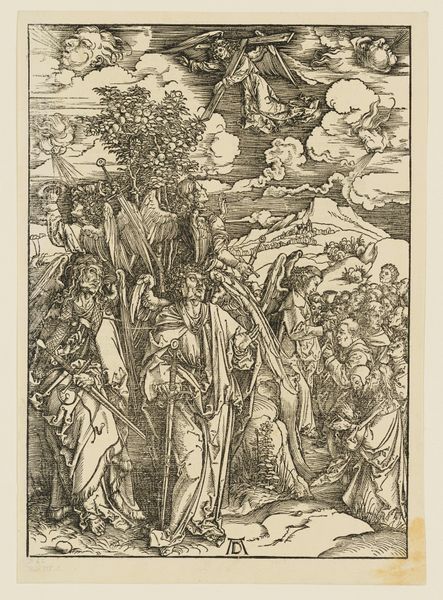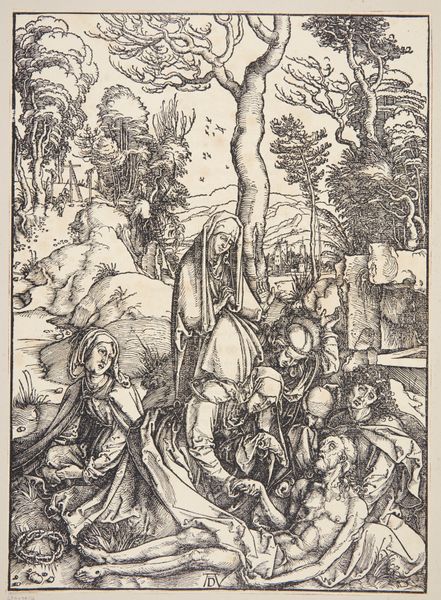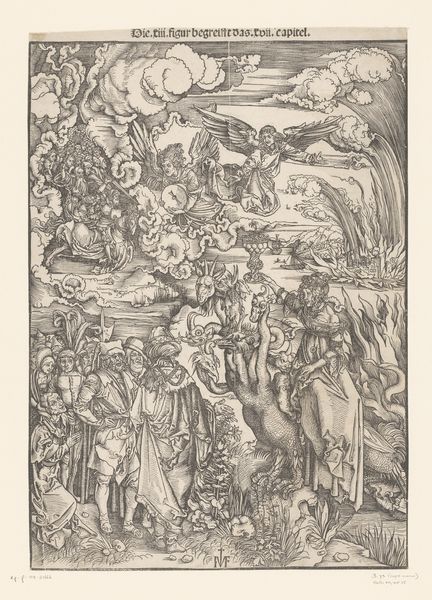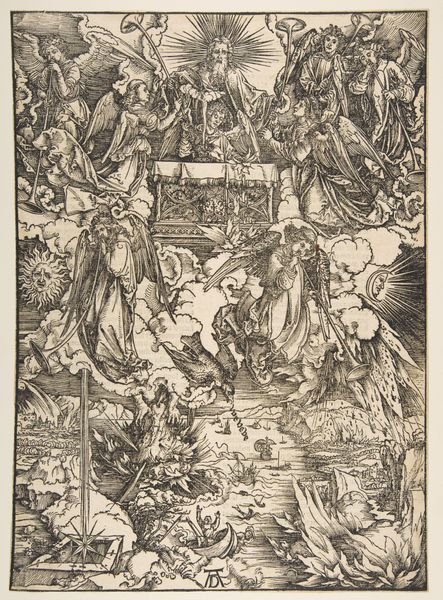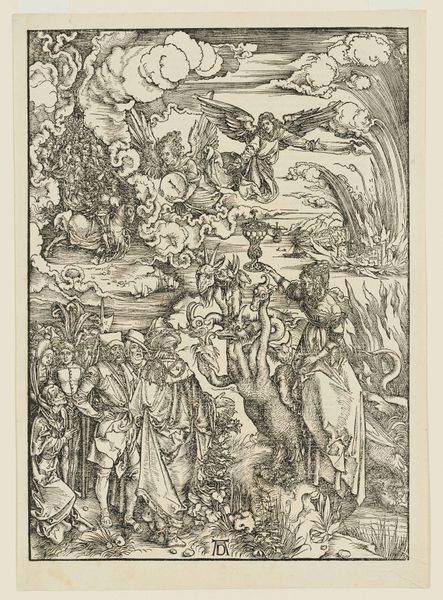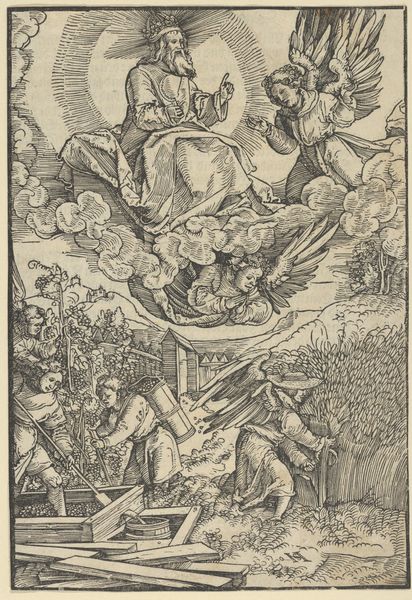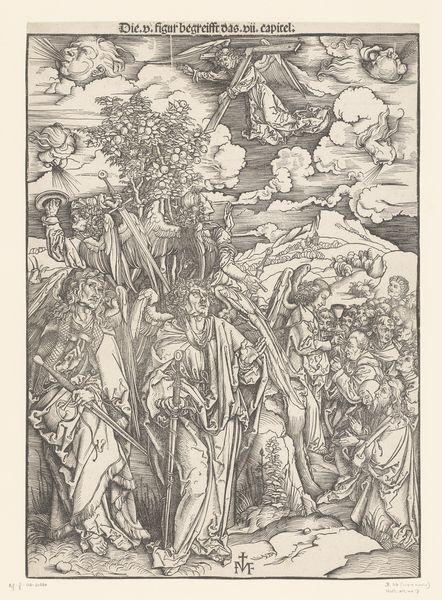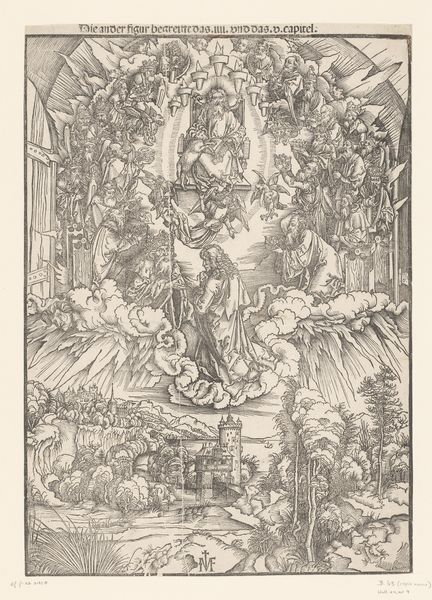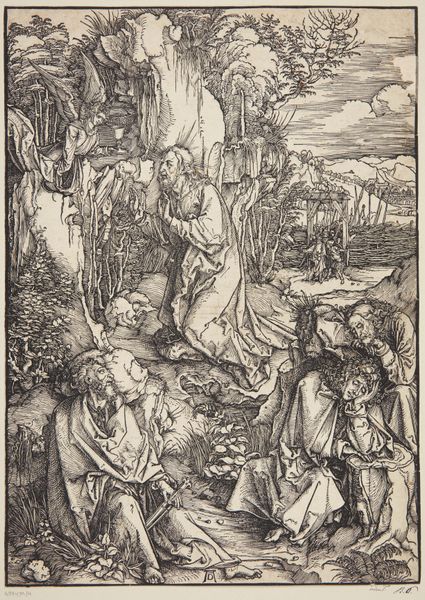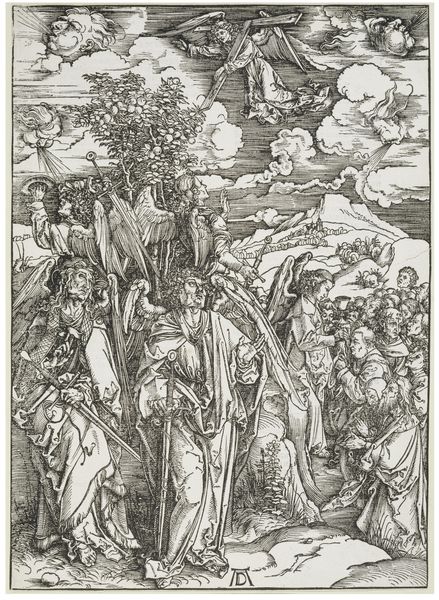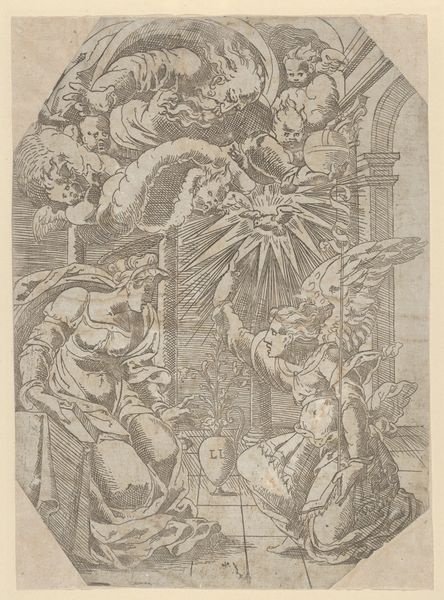
drawing, print, ink, woodcut
#
drawing
#
pen drawing
# print
#
landscape
#
figuration
#
ink
#
woodcut
#
northern-renaissance
Dimensions: 418 mm (height) x 305 mm (width) (bladmaal)
Curator: The feeling I get from this print is quite dreamlike; a delicate balance of tenderness and something deeply unsettling, wouldn't you agree? Editor: It's certainly striking. What we have here is "The Holy Family with Three Hares," a woodcut and pen drawing by Albrecht Dürer, dating from around 1495 to 1498. It resides here at the SMK, Statens Museum for Kunst. Curator: Woodcut... of course. I can see how the lines have an intense, raw feel that just amplifies the dramatic mood. Those sharp contrasts between light and shadow are masterfully done! Editor: The placement is interesting, isn't it? We see Mary, Joseph, and the infant Jesus in a pastoral setting with very common animals at the bottom: the three hares from which it got its title. Yet the context changes the meaning entirely. During Durer’s time, art started to include both religious and classical meanings, something that makes for intense public discourse. Curator: Public discourse is definitely invited with those details. Hares usually represent vulnerability and defenselessness... I see them playing about near what is to be baby Jesus, so that says something, don’t you think? Editor: Definitely! And the landscape is typically Northern European, reflecting the contemporary world that Dürer was working and living in. But the very precise lines denote an order to all the symbolism. The everyday and the spiritual united in this very specific way. The angels and Holy Family float just a step above the normal world. Curator: Precisely! Like the earthly realm and the divine sharing the same air, it all feels incredibly interconnected. Almost makes you wonder, doesn’t it, if perhaps what we consider separate are simply different flavors of the same… something? Editor: That idea of blending sacred with profane was really revolutionary and something people would see at galleries. It changed society’s perception of faith. Curator: A piece that whispers and provokes long conversations centuries after it was crafted; Now that’s true magic. Editor: I agree entirely, this piece presents such rich complexity. The context of its time helped open doors for our time.
Comments
No comments
Be the first to comment and join the conversation on the ultimate creative platform.

